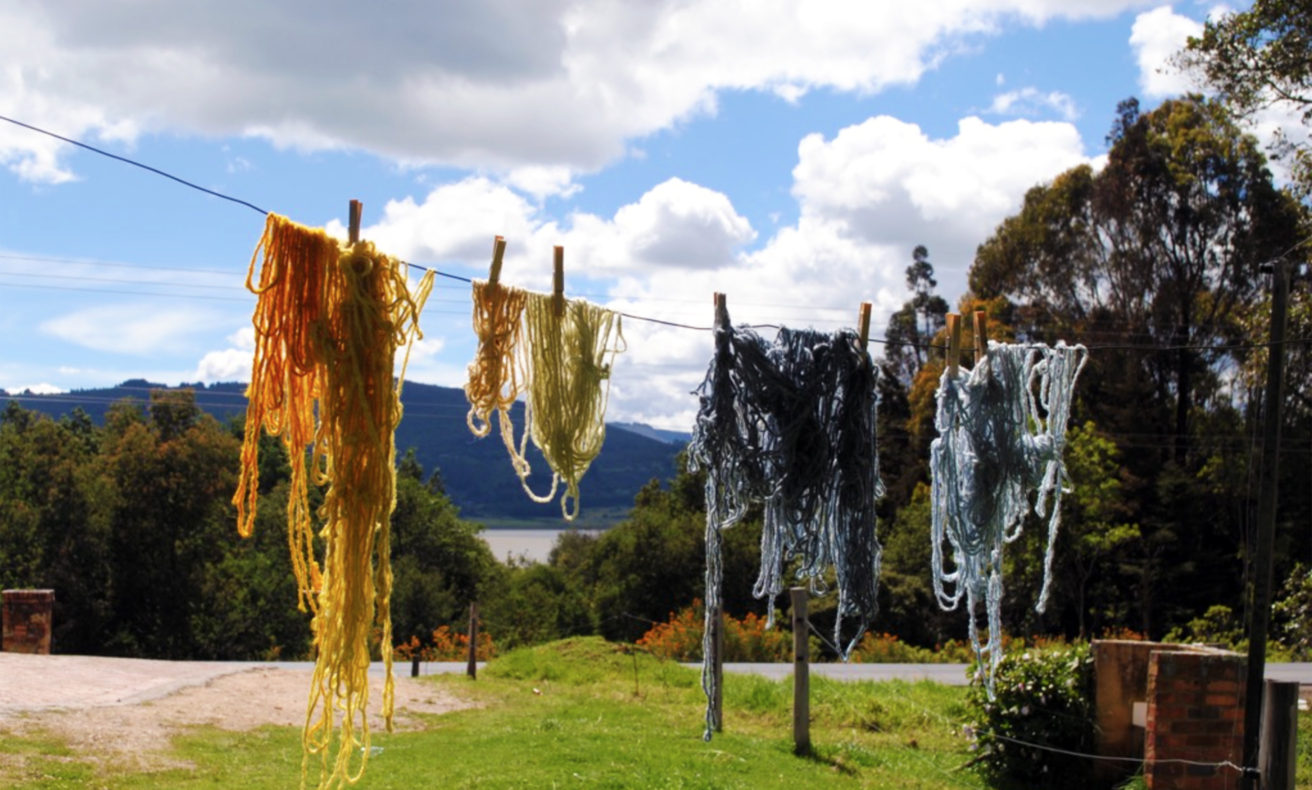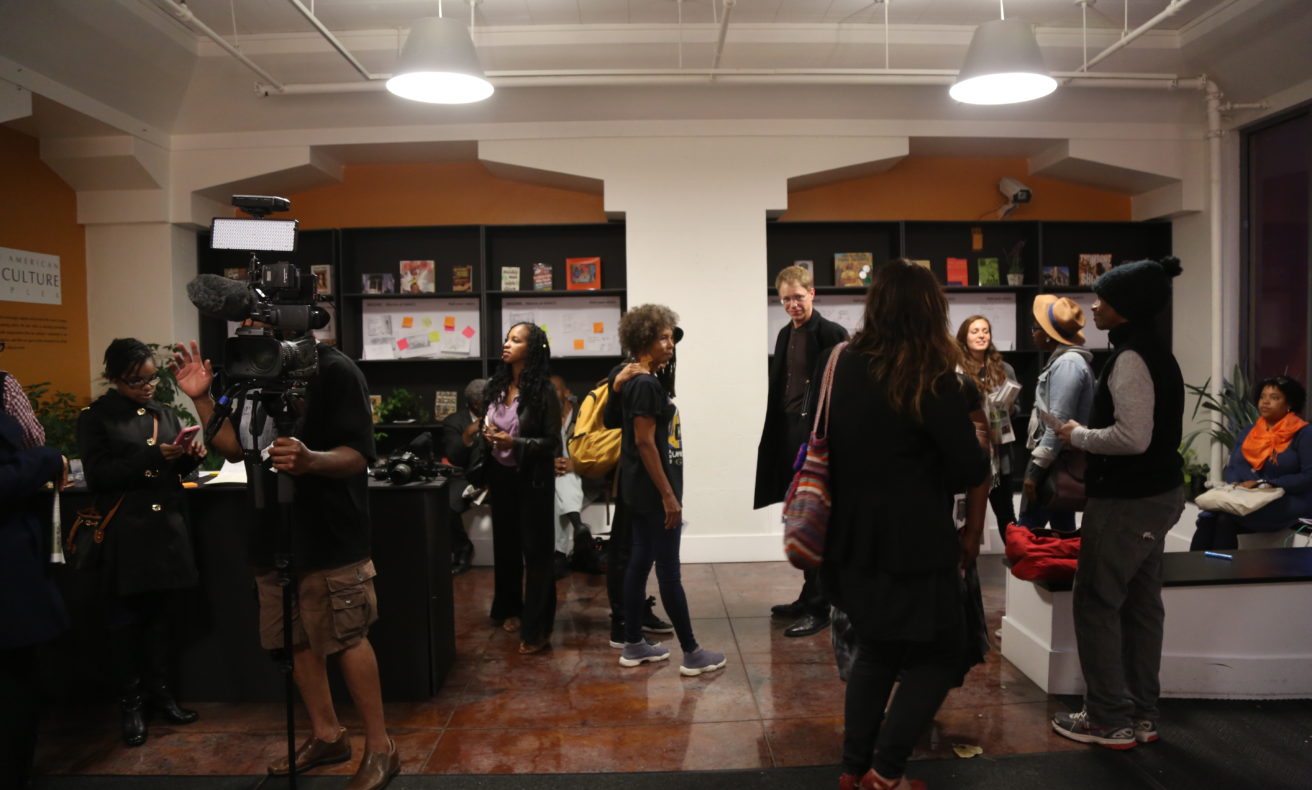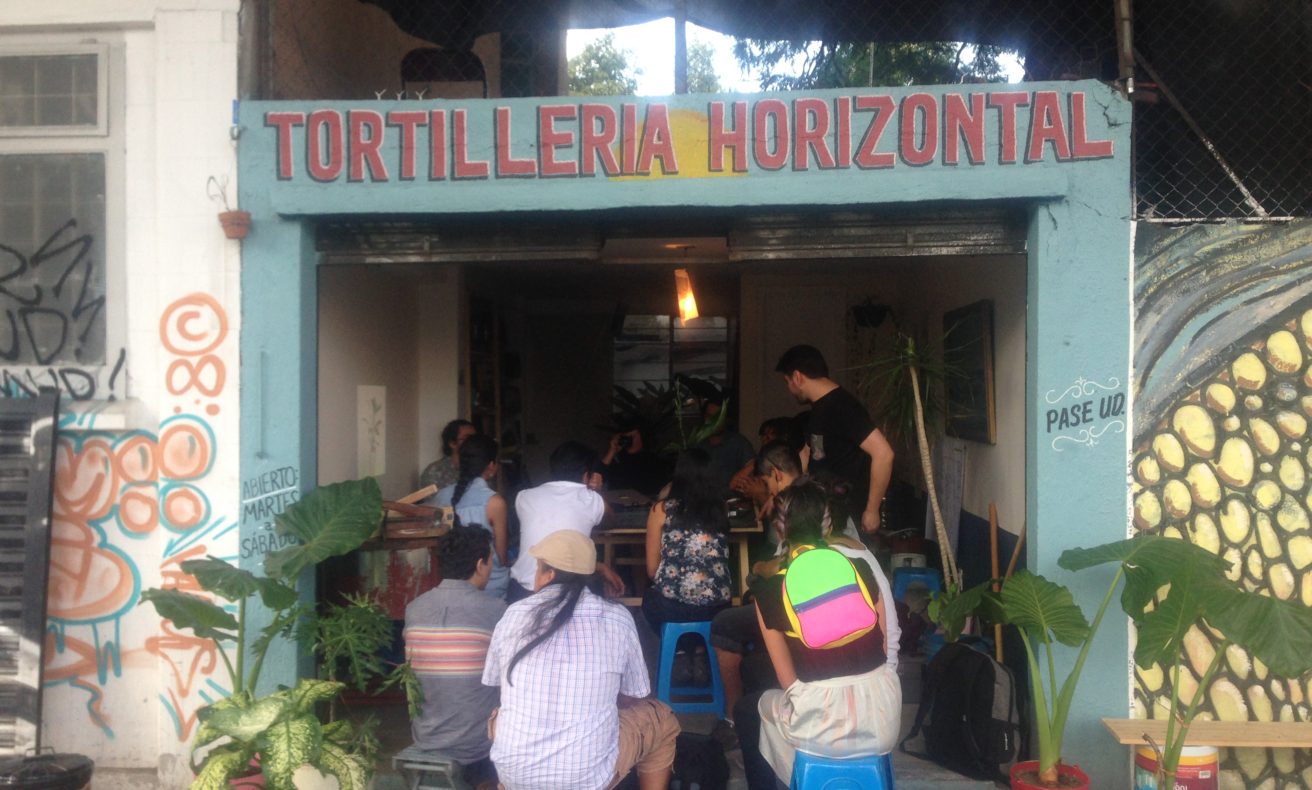As outlined in the introduction to California College of the Arts (CCA), their Center for Arts and Public Life (CAPL) enriches education and artistic practice at CCA by developing programs that operate at the intersection of art, education, and community. In addition to annual scholarship opportunities, micro-grant offerings, and the annual Creative Sprint event, the Center’s recurring, semester-long, community-facing initiatives are Engage (curriculum-based engagement), CCA Connects (externship partnerships), and the IMPACT Social Entrepreneurship Awards which provides student teams with up to $10,000 to develop and actualize a socially innovative project.
In this post we’ll focus on the IMPACT Awards, which is the program that anchors CCI’s matching impact investment in CCA. These $10,000 awards are available to teams of undergraduate and graduate students from all academic programs, and are determined through a rigorous juried selection process each spring. Award criteria include: interdisciplinary engagement, social entrepreneurship, and collaborative relationships with a community, either locally or abroad. Selected teams are those that show potential for creating tangible, cause-related and/or place-based outcomes in solving a real-world problem with a community partner.
IMPACT is unique in being one of the only formal, interdisciplinary, extracurricular tracks at CCA, and is often a first experience in expanding studio practice to community engagement work. Past grantees have reported learning opportunities that extend far beyond traditional art school portfolio supplementation: the opportunity to coalesce an organization; to fundraise; and to manage a budget, a project, and a multidisciplinary team in the service of building something tangible, has been a catalyst and inspiration for socially and community-engaged work beyond their time at CCA.
IMPACT has supported nearly 30 projects in a dozen countries since 2011. The experience appears to be a powerful incubator for developing skills in empathy-based research, human-centered design, and client/partner management techniques that are still rare offerings in art school pedagogy. Here is a sample of five of the projects that show promise as a strong economic model with measurable and potentially replicable impact:
MARCUS BOOKS (San Francisco, CA)
Marcus Books served as a critical hub for the San Francisco African American community from the 60’s until its recent price-out from the Fillmore in 2014. “Team Marcus Books” partnered with the African American Art and Culture Complex (AAAC) to recreate the space within the AAACC’s physical complex. The team acted as design facilitators: creating and testing prototypes, devising business strategies, and providing architectural renderings and visualizations. They also supported a dynamic relationship between the community and the organization, actively incorporating community voices into the design process. The tools and resources they developed are being used by the AAACC to carry the project forward.
The team’s stated mission was to, “use our design thinking skills to strengthen resilience in the FIllmore community in the face of extreme poverty and gentrification.” The team (Emily Booth, Alberto Ishida, Sarah Ludwig, Amber Murray) came from a diverse background of undergraduate majors, but were all attracted to social practice and coalesced after AAACC Director Mohammed Bilal spoke to their Social Lab class. Bilala helped the team identify needs and opportunities for and with stakeholders, and served as a mentor and critical go-between with Marcus Books owner Karen Johnson.
The team is pleased that the AAACC has adopted their designs, including installation of bookshelves and planning a small adjoined parklet space to create a more inviting public entryway to the facility. The prototype launch attracted over 70 community members and the initiative appears to have given new life to this important cultural gathering place.
The team is aware of the potentially tenuous nature of their success, however, as, “the project is dependent on the physical space donation of the AAACC, which is hardly a stable or independent economic model.” They also noted that while the work was, “an inspiring, humbling, and uplifting experience, [we] also learned that we need to continue developing hard skills in visual and interaction work to be fully effective.”
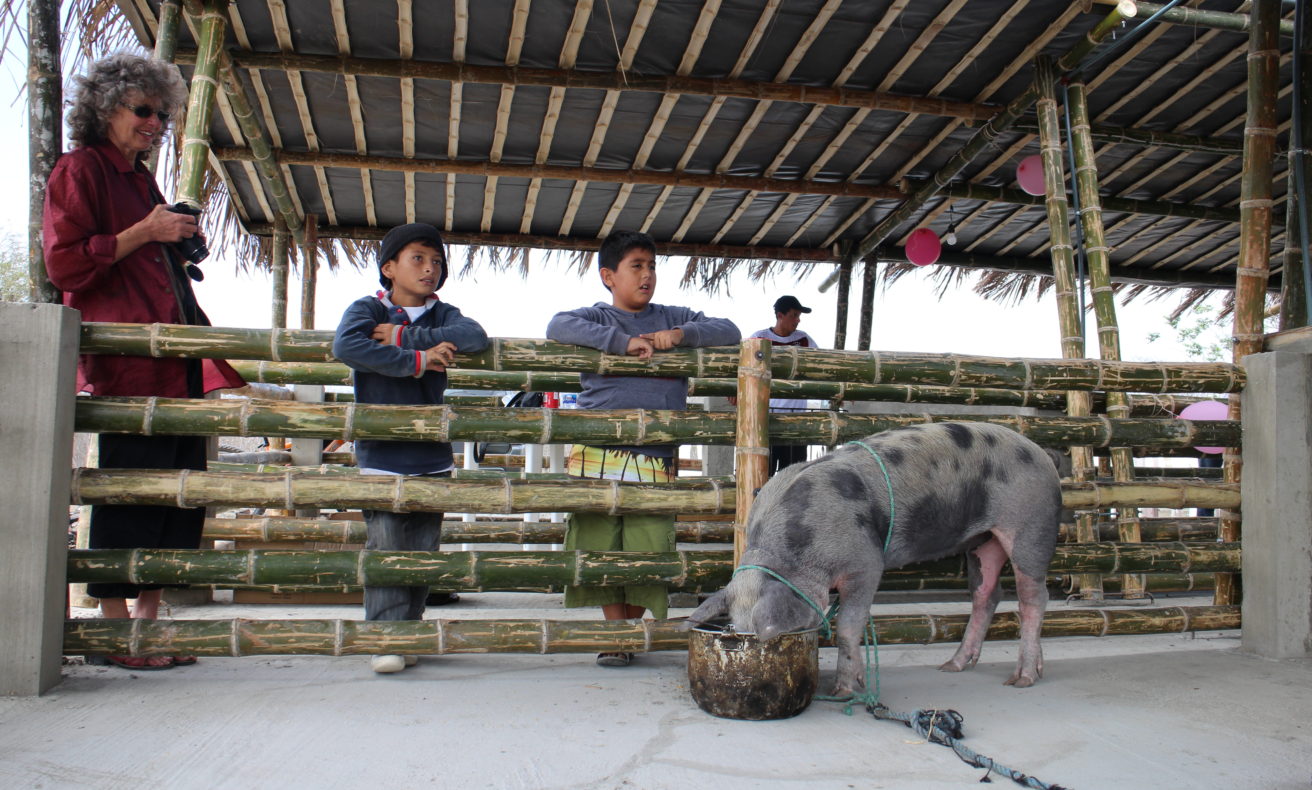
Children present at the Puerto El Morro Pig Project. Puerto el Morro, Ecuador. 2017. Photo by Team Puerto El Morro.
PUERTO EL MORRO PIG PROJECT (Puerto el Morro, Ecuador)
Puerto el Morro Pig Project is a public space project that responds to the sanitation issue of free roaming local pigs in the town of Puerto el Morro, Ecuador. With the support of APROFE, a non-profit association dedicated to the welfare of Ecuadorian families, “Team Puerto el Morro” facilitated dialogue within the local community about the day-to-day health impacts of free-roaming livestock. Through community meetings, site-specific design sessions, and collaboration with local builders, Puerto el Morro Pig Project created a communal pigpen that reduced environmental hazards to the elderly and children, while allowing Puerto el Morro to retain its cultural relationship with the pigs.
The team (Margherita Buzzi, Leah Zaldumbide, Yuliya Grebyonkina) were united in their desire to, “work on projects that bring together creatives from different disciplines, along with non-designers […] to find a way to connect these two worlds to create something that will have a positive impact.” They all noted that the underlying emphasis on interdisciplinary work is deeply embedded in CCA’s pedagogy–and was a draw for them in choosing to attend CCA–and that they particularly enjoyed “the process of designing and building a prototype for a community in need [and] engaging and learning from traditions and practices of other cultures.”
Their mission was to “create a pilot project that would be a template replicated by other community members or even nearby towns, to support local business by creating an opportunity for another reliable source of income, and to improve health and community conditions.” While the pilot was successful, the group’s larger ambition was to “share the acquired knowledge with other communities in need, aiming for a much larger scale of impact. Think of an Ikea manual as a visual example: a straightforward brochure would explain the benefits of the project, list Puerto el Morro as a success story, and give detailed instruction on material quantities, assembly instructions, associated costs, etc. [but] of course such a vast concept cannot magically happen on its own.”
This elevates an important question for these experimental funds: how might funders support long-term financial and talent infrastructure so that successful projects can serve as more than a 1-off case study? The team acknowledges that this type of project is typically supported through charitable giving, but expressed hope that “the bigger picture could include structured support or government partnerships such as taxation incentives.” Clearly an ambitious undertaking that would benefit from access to additional expertise and coordinated resources.
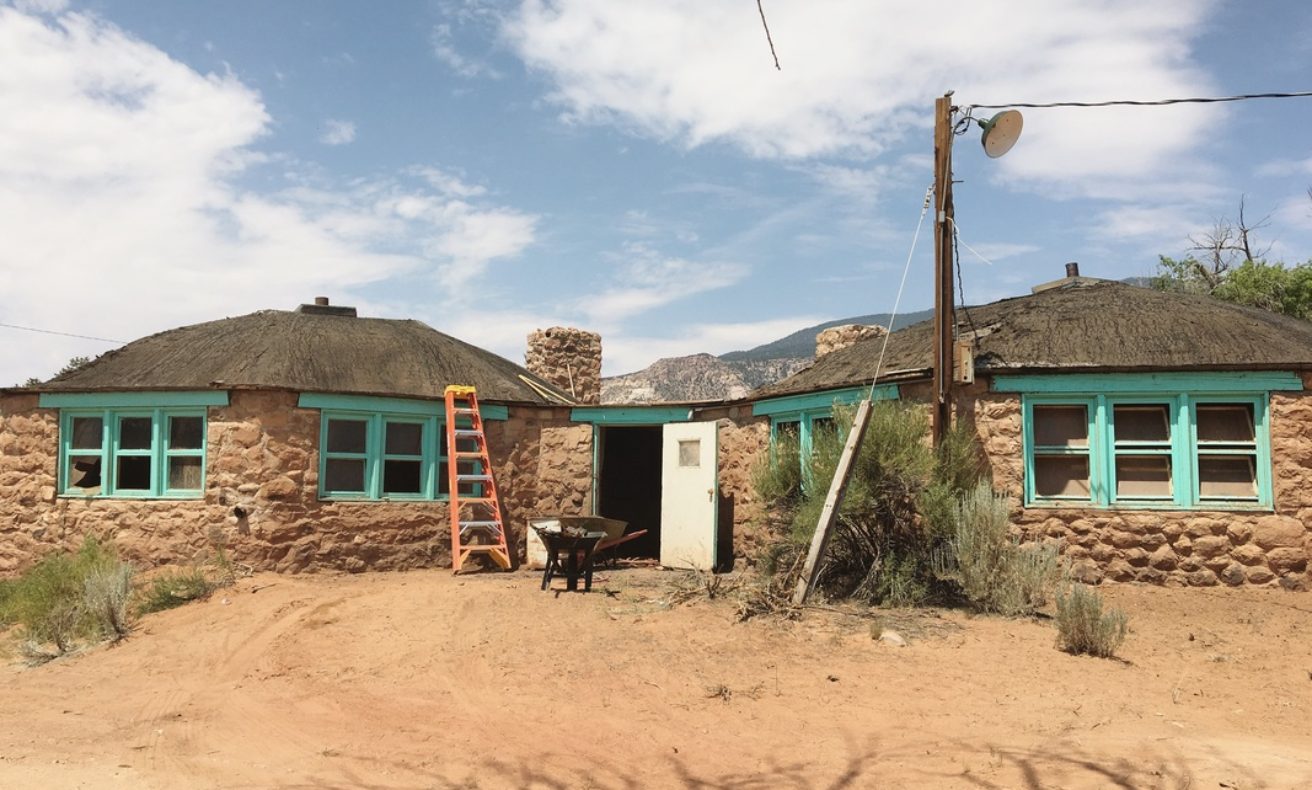
Site of future community arts and cultural center. Navajo Nation, Utah. 2017. Photo by Team Navajo Mountain.
NAVAJO MOUNTAIN (Navajo Nation, UT)
The Navajo Mountain School Project was conceived to empower the Navajo community by renovating a disused building of historical importance. The team (Magdalena Härtelova, Ryan Hueston, Ella Schoefer-Wulf) planned to collaboratively transform an old boarding school building into a site for a community arts and cultural center. The project included public engagement opportunities, a craft workshop, and communal renovation efforts. It aimed to provide tools and resources for the community to leverage its own creativity in continuing to develop Navajo art and culture programs after reconstruction. Furthermore, it documented oral histories of the community (specifically around the boarding schools) in an effort to create historical visibility.
The team’s desired outcomes are nuanced: “We want to bring resources and tools to the community so their members can render their history and culture visible in a larger context. We want to help them self-sustain and apply our time and our own access to resources.” Success in this work is difficult to quantify, but the team measured their impact in terms of “excitement, inspiration, new initiative, and seeing the archive and stories take shape. Our project is one of service-learning: while we offer what we have, we do not determine the outcomes or how our developments are used. We are interested in highlighting intersectionality and making space for more voices in our national historical narrative.”
The team will be returning to Utah this summer to begin work on an oral archive and documentation of local arts and crafts. They are passionate about continuing the project, but expressed understandable concern about their future funding needs.
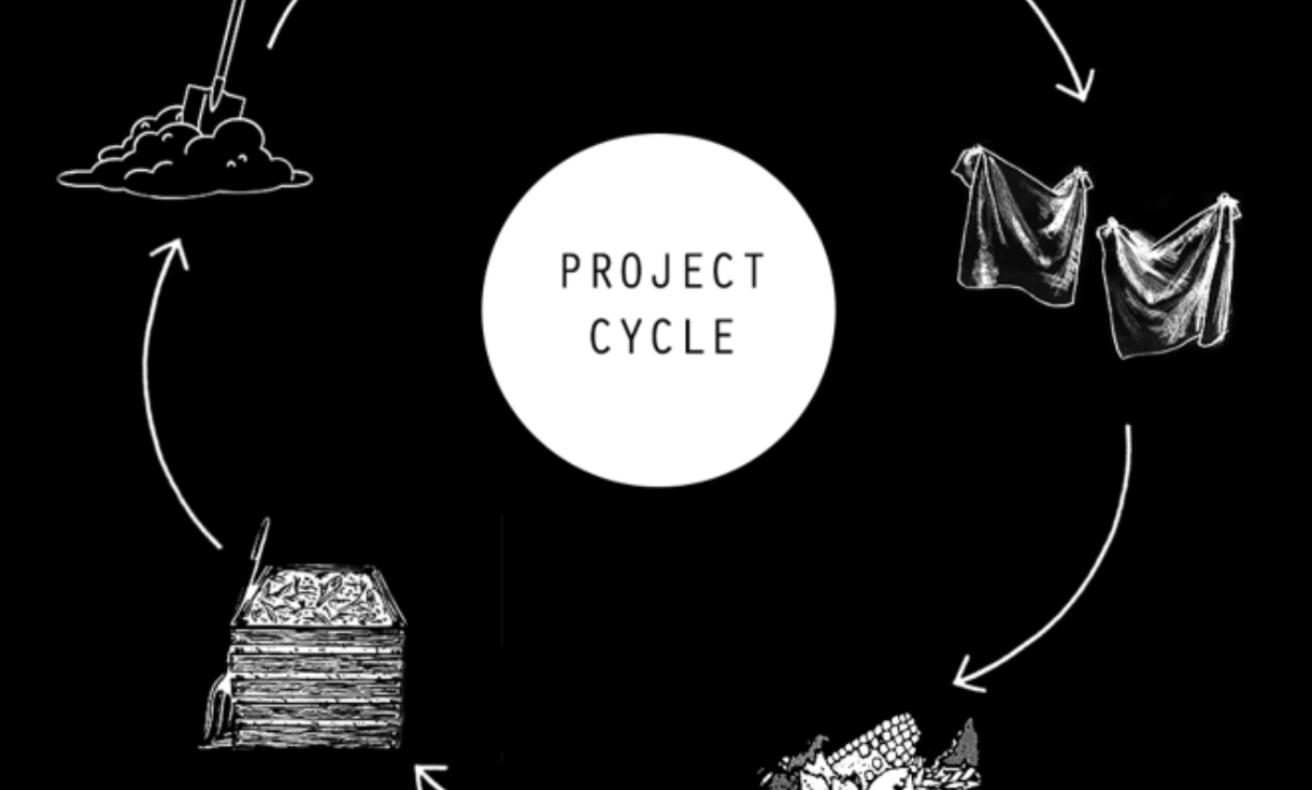
Graphic depicting a sustainable textile process. Guatavita, Colombia. 2017. Photo by Team Weaving Nature.
WEAVING NATURE (Guatavita, Colombia)
Team Weaving Nature envisioned a sustainable cycle of growing, using, composting, and regrowing natural dyes for local artisans, globally. They speculated that their model could be replicated for textile artisans anywhere, and chose Guatavita, Colombia for their first iteration. The team developed dye recipes using easily accessible vegetables, spices, and food waste, compiling them into a bilingual Spanish/English book to distribute to the Guatavita community. They also designed and fabricated a compost bin for waste leftover from dye extraction. The compost would go on to fertilize the next generation of plant dyes.
Like other IMPACT grantees, the team (Misha Abbas, Camilo Villa) noted that this interdisciplinary thinking is deeply embedded in the CCA curriculum. Their stated mission is “to implement a cycle of site-specific natural dying of textiles for both aesthetic and environmental reasons. We hope to find ways to repurpose food waste to start first conversations about environmental sustainability. We’re also making connections between the original site in Karachi, Pakistan and Colombia.”
They were able to measure their success in terms of observed immediate impact: new congregations of intergenerational activities in previously unused space; wide adoption of the natural dying techniques after the workshop; immediate implementation of compost plans; etc. They described the work as a “wonderful starting point for collaboration, and a safe space to test process and see impact on even a small scale.” They see potential in creating sustainability by “creating partnerships between artists, designers, and artisans; creating real exchange and exploring how this work could expand to collaborate with other disciplines. How about the natural sciences?”
The opportunity clearly had an impact on how they perceive themselves as workers and creative practitioners. As Villa expressed:
“Artists have the best job in the world because we not only create objects, but also new ideas and concepts that can be directly implemented in social systems. Issues regarding density and concentration of populations, economy, media, and capital are not usually regarded as issues artists are capable of solving. Artists should be included when solving these problems because we offer a different perspective on the inherent systems of logic and the dynamics of process. […] It is important for us to speak with a convincing language when talking about our skills not only at a craft level, but also as a unique and innovative way of thinking. This is the language we need to use when we reach out for financial support, when we create links with non-artists, and when we propose a sustainable system where both designers and artisans are valued.”
LA TORTILLERIA HORIZONTAL (Mexico City, Mexico)
La Tortilleria Horizontal built an experimental tortilla factory in Mexico City to engage the local community in conversation about the impact of GMO practices on corn and Mexican culture. The team (Maio Alvear, Haegen Crosby, Andreas Krüger Foncerrada, Elizabeth Hernández) constructed a temporary storefront that operated for four weeks; hosting lectures, workshops, concerts, and communal meals.
Their mission was subtle, but strong: “Each member of the team engaged with the project differently and expected different things. Ultimately, Tortilleria Horizontal worked at a street level due to its unexpected and unpretentious nature. Passersby felt curious, and approached us trying to figure out what was happening. This allowed us to have honest and meaningful direct communication about a complex and highly controversial topic in Mexico, which became the most important aspect of the project.”
The team was clearly immersed in the nuances of this thread of social practice: “It is impossible to recount all the important and meaningful interactions that happened on a daily basis. The tortilleria became the scenario of uncountable beautiful moments that transcended just casual conversations. In only a month, we wove meaningful relationships among the neighbors on a regular basis, creating a real and new sense of community.”
The team did not ultimately develop a sustainable economic model for scaling or replicating their project, stating: “This dynamic was only possible through the generous grant we received. It has been a huge learning experience and taught us a lot about the possibilities and limits of socially engaged art. Due to its anti-capitalist logic, this project is unsustainable as a permanent project.” Are they correct? How might we help young practitioners imagine means and methods to seed their work to grow locally, even after their own direct engagement ends? How might this team–all of the IMPACT teams–benefit from ongoing discussion of best practices from among their cohort of projects? Is nurturing and broadcasting this growing body of knowledge of value to funders? These are some of the questions we’ll continue to consider as we explore more of CCA’s work in future posts.
